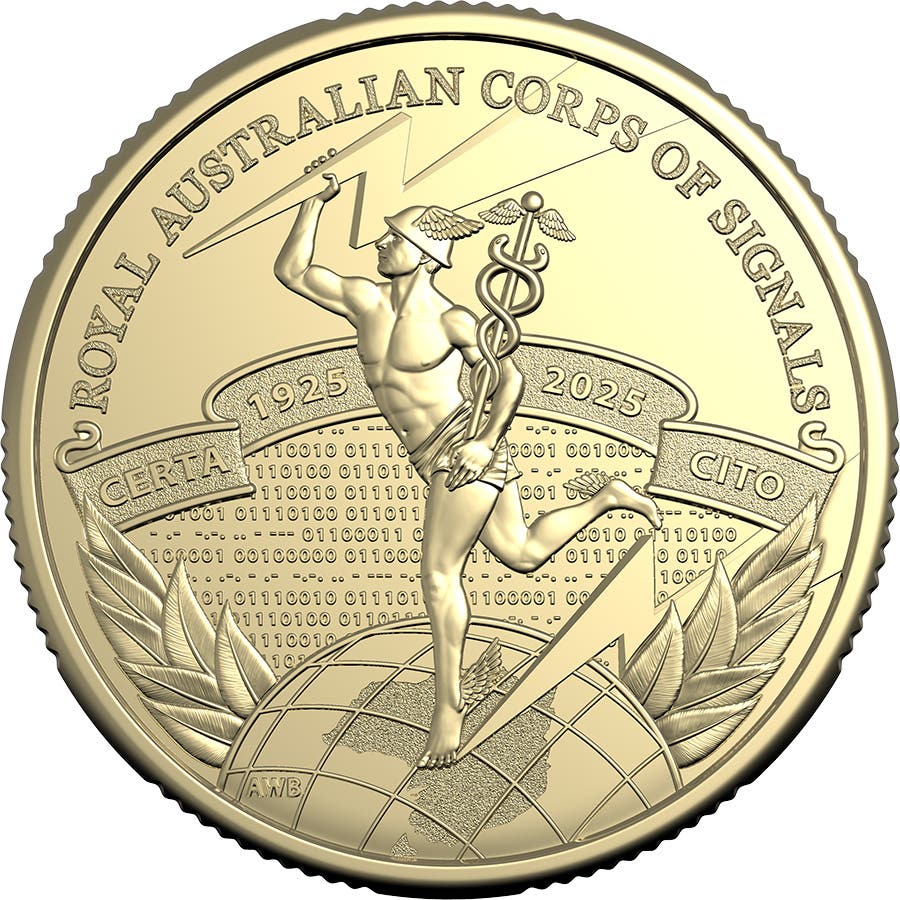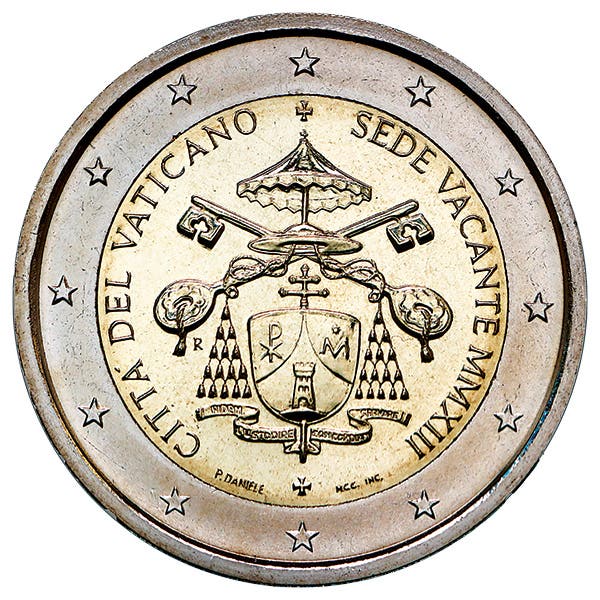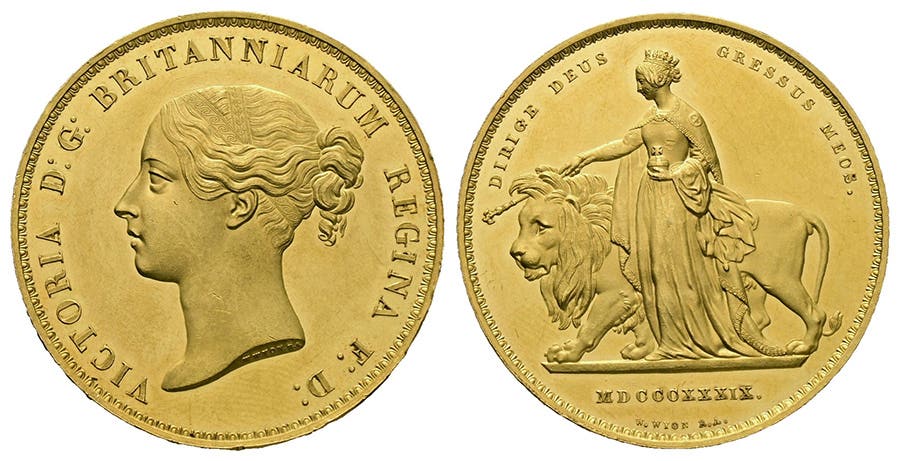Spanish silver filled Queen Anne’s coffers
On March 8, 1702, a horse stumbled in England, and the rider was thrown onto the ground. Within a few days, he was dead from the injuries. Accidents of this…
On March 8, 1702, a horse stumbled in England, and the rider was thrown onto the ground. Within a few days, he was dead from the injuries. Accidents of this sort were common in the days before automobiles, but in this case the unfortunate event was special as it was King William III of England who died.
His successor was Anne, one of the more tragic figures in the long history of the British monarchy. Of her 17 pregnancies, only one son lived beyond infancy, and even he had died at the age of 11 in 1700, two years before she became queen.
Anne was the daughter of James, Duke of York, the brother of King Charles II (1660-1685); she was born in February 1665. In July 1683, while Charles was still king, she married Prince George of Denmark, and the marriage was a happy one until his death in 1708. Anne died in early August 1714 at the age of 49.
Charles II had no legitimate heirs, and his brother James ascended the throne in 1685. The new king, however, was a Catholic, not exactly the most popular religion in Great Britain during this era.
By 1688, matters had reached the boiling point, and anti-Catholic sentiment among the upper classes forced James from the throne. His eldest daughter, Mary, was married to a Dutch prince (William), and the two were invited to England as the new rulers. Mary died in 1694, but William III remained as king until his untimely death in 1702.
Anne’s coronation was held in late April 1702 at Westminster Abbey. It was an ornate affair, as would be expected, and her reign thereby started on a positive note. Medals were issued for the event, and today they are in demand from medal collectors, especially those struck in gold or silver.
Only three denominations were struck in 1702, the gold guinea and half guinea, as well as the silver shilling. Each carried a fine portrait of the queen, though this was slightly modified from time to time. Those who specialize in coins of this ruler collect the different portraits, but the ordinary collector is usually satisfied with a run of dates for the different denominations or even just a type set.
The obverse legend on the gold and silver reads ANNA DEI GRATIA, or “Anne, By the Grace of God.” The reverse legend, also in the traditional Latin, continues the obverse with REG MAG BR FRA ET HIB, which translates to “Queen of Great Britain, France and Ireland.” The claim to the French throne went back several hundred years and was not dropped until after 1800.
The reverses for the gold and silver through 1705 are relatively similar, with four shields arranged cruciform. Clockwise from the top, the shields represent England, Scotland, France, and Ireland. The gold coins have the mace, a symbol of royal authority, between the shields, while the silver has plumes, plumes and roses, or nothing between the shields. It would appear the reverses of the silver coins were somewhat at the whim of the mint officials.
Although one would think that the gold guinea coins were worth one pound (£1) each, such was not the case. It was originally, in the 1660s, valued at that rate, but changes in the relative prices of gold and silver meant that the guinea was tariffed at 21 shillings under Anne, rather than 20.
The British monetary system during Queen Anne’s reign had remained unchanged for nearly a thousand years and would stay in place until the 1960s under Elizabeth II, when the nation went decimal. Until then, however, the pound was composed of 20 shillings, and each shilling was made up of 12 pennies, or pence. Each penny was further subdivided into halfpenny and farthings (quarter penny).
The master of the London Mint is a name well known to those persons interested in scientific matters. He was Sir Isaac Newton, one of the most famous scientists of all time. He is also known to modern-day numismatists as an energetic mintmaster whose products are well collected today.
In 1703, the number of denominations struck for the public expanded to the point that all values, except for the two guineas in gold, were struck during that year. These coinages were special in another way in that most of them carried the word VIGO on the obverse, just below the bust of the queen. (The small silver coins, fourpence and less, did not carry VIGO in 1703, however.)
The coinage of 1703 was in fact struck from gold and silver taken at the Battle of Vigo, in which the combined British and Dutch navies soundly defeated the joint forces of Spain and France. The annual Spanish treasure fleet, protected by French warships, had left Havana in July 1702 and arrived at the Bay of Vigo in northwestern Spain on Sept. 23. In mid October, a combined Anglo-Dutch fleet commanded by Admiral George Rooke overwhelmed the Spanish and French vessels as well as the land defenses.
The victory was so complete that all of the enemy vessels were either burned or captured. The odd part of this affair was that the Spanish had not wanted the French involved as they were afraid that Paris officials might have ordered French warships to seize the treasure before it got to Spain.
The victors seized a considerable amount of gold and silver, though much of the treasure had already been landed by the Spanish authorities, and the haul was much less than might otherwise have been the case. Newton later stated that, in modern terms, about 2,000 kilograms of silver had been brought to the London Mint, but only a negligible amount of gold. As a fair number of gold coins were struck in 1703 with the VIGO wording, it may be that some of the excess silver was exchanged for gold to create a larger coinage.
The most spectacular of the VIGO gold coins was the 5 guinea piece, about the size of a United States double eagle ($20 gold coin). These are of course very rare today as not all that many were made in the first place.
From 1704 to 1707, the gold coinage was somewhat erratic and usually small as supplies of this metal were in generally short supply. This was not so with the silver, however, and examples from these years for several of the denominations are obtained by collectors at reasonable prices. The two largest silver values, the crown (5 shillings) and half crown (2 shillings sixpence), are not seen as often as the two next smaller denominations, shilling and sixpence (half shilling).
The London Mint also struck a series of four smaller silver coins from one penny to fourpence. In general, these four values were struck every year from 1703 to 1713, though VIGO is not found on the 1703 issues. These four silver coins are better known to modern collectors as Maundy Money, which was one of their uses, though in Queen Anne’s time the public thought of them simply as regular coinage. Very few people knew anything about the Maundy ceremonies in which a select number of poor people were presented with a set of these small coins each year.
Coins struck through 1707 are called “pre-Union” coins, while those struck later are called “post-Union” coins. Prior to 1707, in a legal sense, the two countries of England and Scotland had been bound together merely because there was the same ruler for both. This odd state of affairs came about in 1603 when King James VI of Scotland became King James I of England upon the death of Queen Elizabeth I.
The elevation of Anne to the throne in 1702 created problems with some in Scotland who did not wish to see the end of the Stuart dynasty. Anne had no living children and was unlikely to see a further pregnancy, indicating that a non-Stuart family member might inherit the throne. This caused a rift in the political relations between England and Scotland.
Scotland struck first by declaring in 1703 that, if necessary, it would choose a king from among the Stuart candidates, regardless of what England did. London retaliated in 1705 by threatening to treat Scotland as a foreign country with onerous customs duties as well as revoking the right of Scottish workers or tradesmen to be in England without special permission.
Scotland got the message and, in 1705, decided that an agreement to create a union of the two nations was the best solution in the long run. In July 1706, a special commission composed of members from both countries worked out rules acceptable to all. The agreement was duly ratified by the parliaments in London and Edinburgh in early 1707.
One of the more interesting clauses of the Union agreement was the reactivation of the Edinburgh Mint as a branch of the London Mint. Edinburgh had never struck coins to the English standard but during the 17th century had minted Scottish pieces for domestic use, mainly of silver and copper.
The ratified agreement came too late to change the coinage plans, and dies for the first part of 1707 at London used the pre-Union designs first produced under Anne in 1702. Under London mintmaster Sir Isaac Newton’s careful directions, however, new designs were prepared for the reverses of the gold and silver coins. (There was no copper coinage for this reign until 1714.)
While the obverse design and the inscriptions on both sides were not disturbed, the shields underwent changes. At the top and bottom we now find a shield with Scottish and English symbols sharing the space while the old French arms are on the right and those of Ireland on the left.
More gold was struck beginning in 1707 than had been true for the earlier years of Anne’s reign. A new denomination, two guineas, was introduced and seems to have been relatively popular as it was struck in four different years. Guineas and half guineas were also struck on a regular basis and, today, either of the these denominations can be obtained without too much difficulty.
Some of the gold guinea coins have an elephant and castle below the bust on the obverse. This indicates that the Africa Company was responsible for the gold, which came from the West Coast of Africa. None of the other gold denominations carried this motif, nor did any of the silver coins.
The silver coins of 1707 and 1708 are interesting for the fact that the Edinburgh Mint struck the sixpence, shilling, halfcrown, and crown. None of these coins is especially common, and high-grade specimens in particular are far from cheap. Such coins are easily identified by the presence of the mintmark “E” below the bust.
After 1708, the Edinburgh Mint struck no more coins on the English standard and, in fact, struck no more coins at all for the marketplace. London Mint officials were less than pleased with the expenses of their northern branch and, in due course, prevailed by having the Scottish mint closed to coinage.
Prior to the Union, however, the Edinburgh Mint did strike 5 and 10 shilling silver coins, but on the old Scottish standard. The ratio between the two systems was 1 shilling English equal to 13.044 shillings Scottish. This meant that a 10-shilling Scottish coin was worth the inconvenient amount in England of 9.2 pence.
The Edinburgh Mint did remain open, however, for a certain length of time in order to provide salaries to high-ranking officials. These positions were nothing more than sinecures for those who supported Queen Anne and, in due course, the British Treasury was able to shut down the unwanted salaries as well.
The coinage of copper had stopped under William III in 1701. Nearly £140,000 worth (equivalent to about 65 million halfpennies) had been struck after 1694, and this was considered sufficient for several years. By 1712, however, there began to be demands for further coinage, and the Treasury took these requests under advisement.
Isaac Newton believed that the Mint itself should undertake to strike the necessary copper coinage. There were suggestions that the planchets be made outside the Mint, but Newton opposed this and decided that workmen would roll out ingots of copper to the proper thickness. The blanks would then be punched out of the rolled copper and struck into farthings or half pence as was desired.
To this end, Newton ordered that Chief Engraver John Croker prepare pattern dies and coins for inspection by the Court and Treasury; Anne would have been naturally interested in the designs of coins issued under her authority. Patterns dated 1713 and 1714 exist, and one of these in particular has gotten a good deal of attention from numismatists over the past two centuries. This is the famous 1714 farthing. (A farthing is a quarter penny.)
It is not at all clear if the 1714 farthing was actually issued in a small quantity for circulation or if there was simply an excess number of pattern pieces struck for examination by the proper persons.
Whether issued for circulation or not, the 1714 farthing has always been in strong demand from collectors. It was rumored, incorrectly, that only three pieces had been struck; this particular belief ought to have been quashed in 1802, when a number of specimens were offered for sale in the London papers.
One of the more interesting incidents connected with this coin came in 1814 when George Hone was sentenced to a year in prison by an Irish court for stealing one of these coins. An official statement made at the trial claimed that the coin was worth about £1,400, an enormous sum by today’s standards.
At the present time, this coin is worth about $1,000 or a bit more. Specimens show up from time to time, mainly at auctions held in Great Britain.
It is possible that some of the presently known farthings of 1714 were actually struck a few years later. It is known that restrikes of some halfpenny patterns were struck in the 1730s, but the dies appear to have been destroyed about that time.
Although Anne ruled for only a little over 12 years, her relatively short tenure did produce a fair number of interesting coins well regarded by modern numismatists.
This article was originally printed in World Coin News. >> Subscribe today.
If you like what you've read here, we invite you to visit our online bookstore to learn more about Standard Catalog of Great Britain Coins eBook.
NumismaticNews.net is a participant in the Amazon Services LLC Associates Program, an affiliate advertising program designed to provide a means for sites to earn advertising fees by advertising and linking to Amazon.com and affiliated websites.








